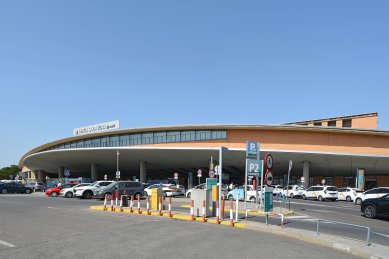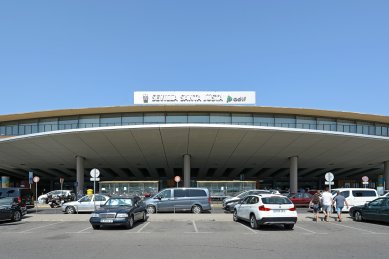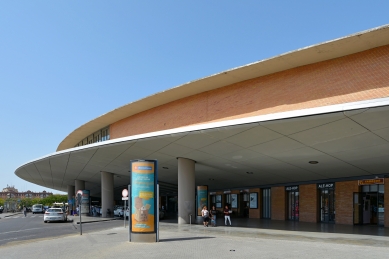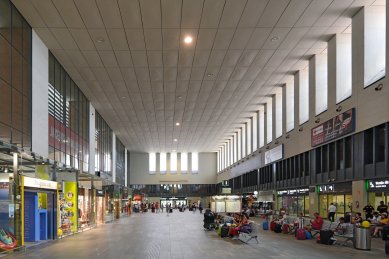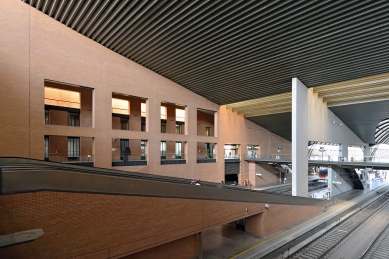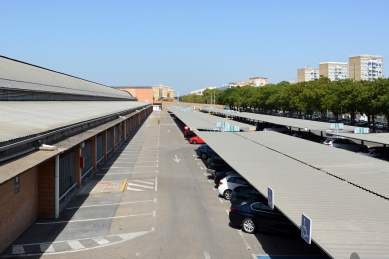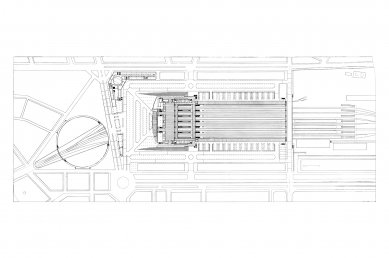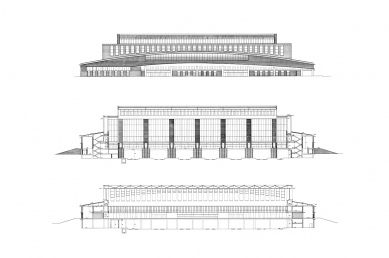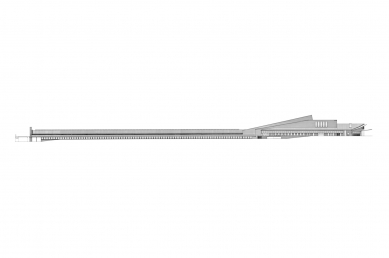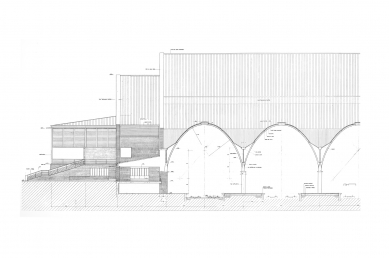
Santa Justa Railway Station
Santa Justa estación central de tren de alta velocidad

The area chosen for the new central passenger station in Seville, although relatively near to the city center, was a large site that had hardly been developed at all. The new station was expected to turn the surrounding neighborhood into a busy urban nucleus. This effect was to be augmented by link-ups to be built over the new train lines, there by connecting neighboring parts of the city previously separated.
It was thus considered vital, before starting on the design for the station building itself, to re-plan the large site inside which it was to be located.
A three-storey building was designed with an average depth of 25 meters to run along nearly the entire perimeter of the site. This would position the station within homegeneous surrounding, more suitably laid-out than the old neighbourhood. Having a single building stretching along the edge of the site would also provide the old and new streets with a uniform line of reference, configurating a wider area so that the station building and the generous spaces necessary for traffic and parking would not clash with the scale of the surrounding urban environment. Within a short period, the new activities were to create a sector of the city whose identity would revolve around the fact that it contained a railway station. Until then, the Santa Justa Station project could not be considered complete.
The station building is built on a knot of railway lines that gives it the appearance of a terminal station. It is easier to establish efficient functional layouts in terminals, and since the lines continue south from the station underground, entering a long tunel running underneath the city, this seemed the obvious solution. It also facilitated a rather pleasing metaphor or analogy of movement and arrival.
The six, clearly differentiated naves covering the platforms join up in a single space, spanning them all,communicating with the passenger concourse and the entrance canopy. Lighting qualities vary, reinforcing the sense of sequential spaces. The different roofs contribute further to this, with structural solutions that allow the wide spans to be experienced without actually showing their internal mechanisms.
It is, then, a building made up of areas with markedly different characters: domes over the platforms, a sloping roof over the central span, the prism-like concourse. These all reside inside a building that, in the end, expresses movement. However, the treatment of light, the choice of materials, and the layout of the spaces perpendicular to the line of the trains take us back to the unitary nature of the building.
It was thus considered vital, before starting on the design for the station building itself, to re-plan the large site inside which it was to be located.
A three-storey building was designed with an average depth of 25 meters to run along nearly the entire perimeter of the site. This would position the station within homegeneous surrounding, more suitably laid-out than the old neighbourhood. Having a single building stretching along the edge of the site would also provide the old and new streets with a uniform line of reference, configurating a wider area so that the station building and the generous spaces necessary for traffic and parking would not clash with the scale of the surrounding urban environment. Within a short period, the new activities were to create a sector of the city whose identity would revolve around the fact that it contained a railway station. Until then, the Santa Justa Station project could not be considered complete.
The station building is built on a knot of railway lines that gives it the appearance of a terminal station. It is easier to establish efficient functional layouts in terminals, and since the lines continue south from the station underground, entering a long tunel running underneath the city, this seemed the obvious solution. It also facilitated a rather pleasing metaphor or analogy of movement and arrival.
The six, clearly differentiated naves covering the platforms join up in a single space, spanning them all,communicating with the passenger concourse and the entrance canopy. Lighting qualities vary, reinforcing the sense of sequential spaces. The different roofs contribute further to this, with structural solutions that allow the wide spans to be experienced without actually showing their internal mechanisms.
It is, then, a building made up of areas with markedly different characters: domes over the platforms, a sloping roof over the central span, the prism-like concourse. These all reside inside a building that, in the end, expresses movement. However, the treatment of light, the choice of materials, and the layout of the spaces perpendicular to the line of the trains take us back to the unitary nature of the building.
0 comments
add comment



